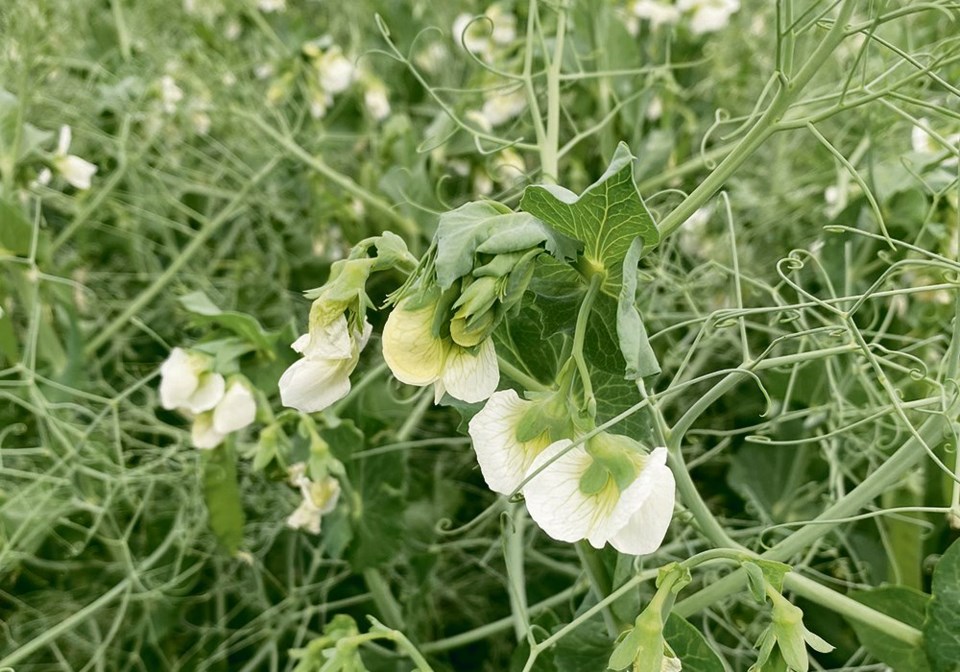WESTERN PRODUCER — Spring conditions vary widely this year in Saskatchewan, with some early pulse seeding work already starting in the west-central, southwest and south-central regions, while in other areas producers wait impatiently for the last of the snow to retreat and fields to dry.
Ken Panchuk, a soils specialist with the Crops and Irrigation Branch at the Saskatchewan Ministry of Agriculture, said producers should attend to a few last-minute items before heading into fields.
He said farmers have likely secured adequate supplies of seeds and inputs, but anyone that hasn’t, needs to make this the top priority.
Next is to check herbicide history, going back at least two or three years, in the fields 小蓝视频 considered for pulses. This is particularly important in areas that experienced drought, where lack of moisture may have slowed the breakdown of crop protection products.
“This is very important to review the risk of carryover of certain herbicides that may negatively impact pulse crops,” Panchuk said. “Check with your herbicide company representative and have a discussion about risk and options.”
He also urged producers to consult the 2022 Guide to Crop Protection, available on the Saskatchewan government website.
Next up is soil testing.
“If you haven’t got a soil test analysis for the field, it may be a very good idea to do a soil test for nitrogen to determine the nitrogen levels in the fields selected for pulses,” Panchuk said.
He said pulses generally need less than 50 pounds of nitrogen per acre at seeding to encourage early onset of nodules and to get them fixing their own nitrogen as soon as possible.
The exception is dry beans, which show extremely variable amounts of nitrogen fixation. This is likely due to the type of bean, the variety and the effectiveness of the rhizobia inoculant.
“For dry bean, plan for a nitrogen management strategy to assist in achieving optimum yields given the growing conditions we will experience this season.”
A wild card this year is nitrogen left behind by last season’s drought-stunted crops.
“Given the dry year last year, nitrogen levels in the soil are on average much higher going into 2022 growing season,” Panchuk said. “It may be hard to find fields with N levels low enough (under 50 lb. of nitrogen per acre).”
He said phosphorus is a more important starter fertilizer because the process of converting atmospheric nitrogen from air pores in the soil is energy-intensive and phosphorus is critical in this process.
“If your seeder does not allow you to place starter phosphate or you are concerned of possible injury to the seed, there is an alternative to use: a dual inoculant that has both the correct strain of rhizobia and a phosphorus solubilizing inoculant as well,” he said.
While pulses are better at scavenging phosphorus from the soil than the starter phosphate, such dual inoculants should be enough to get the young plants primed. Again, soil testing for phosphorus levels will provide guiding information.
While testing for soil nutrient levels, testing for moisture at the same time is a good idea as conditions are likely to be variable, Panchuk said.
Short stubble and clipper-type snowfall events with their high winds resulted in a combination of nearly bare soil in some areas and deep drifts in others. The exception is the more northern grain belt, which enjoyed a generous snow pack.
“The subsoil moisture is what will carry the crop between growing season rainfall events,” he said. “More subsoil moisture, the better the buffer for yield potential.”
What about inoculants? Panchuk said liquid, peat-based and granular products are much more robust than years ago, so preserving active rhizobia is less of a concern, even in areas harder hit by last year’s drought.
“There is some subsoil moisture in the drier areas and with zero-till with residue cover. Preserving that moisture should be adequate for crop establishment,” he said. “Check for subsoil moisture to be sure how much moisture buffer you have.”
That said, it’s still important to protect inoculants during seeding and before they can access that soil moisture. Sunlight and desiccation from dry air can still kill rhizobia in inoculants.
In terms of what type of inoculant to use, most zero-till drills and seeders come with a commodity cart to handle granular products, which gives them an edge in terms of convenience over liquid and peat-based inoculants. Going granular also allows the producer to treat seed with fungicides.
Which inoculant to use? Well, that depends on the pulse. Different strains of rhizobia colonize different crops. Soybeans, for example, are the preferred host for Bradyrhizobia.
Panchuk says the label must specifically name the pulse crop it is intended for to be effective.
In Saskatchewan’s highly variable weather and various soil types, it’s important to use the right inoculant and not to count on carryover.
“Yes, there are residual rhizobia overwintering and surviving for several years but those strains that survive may not be the most efficient at fixing N,” Panchuk said. “That’s the main reason why pulse crops should be inoculated with the appropriate strains of rhizobia every year.”
There are many variables involved, but there’s also expert help available on provincial government websites, company fact sheets and producer groups such as SaskPulse, Alberta Pulse Growers and Manitoba Pulse and Soybean Growers.
As well, Panchuk says producers can call an agrologist or certified crop adviser to discuss specific questions.




